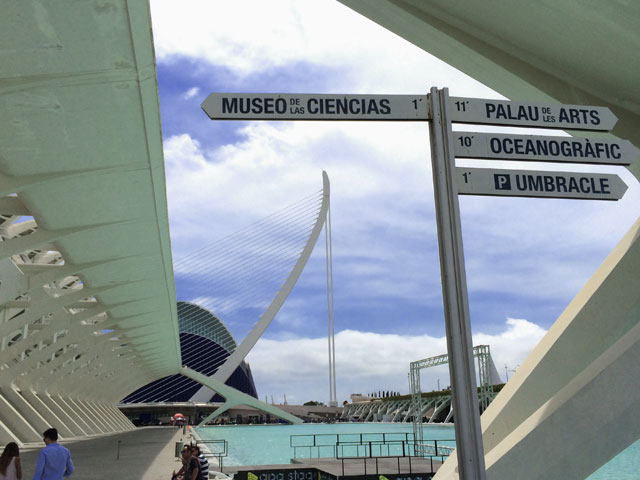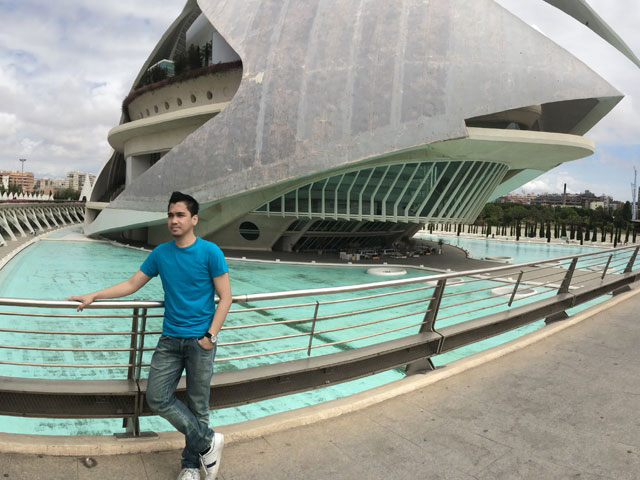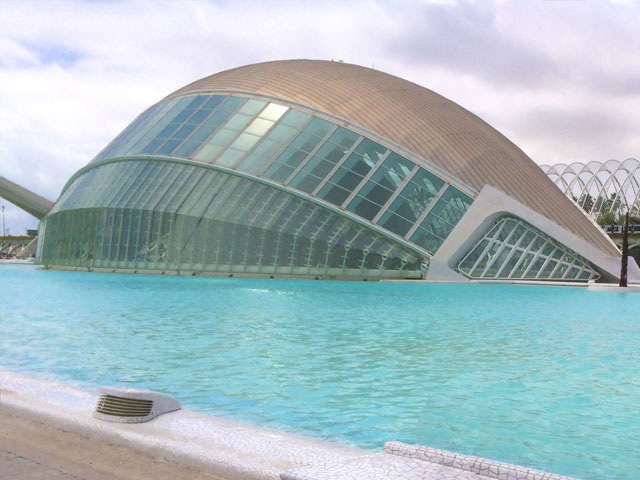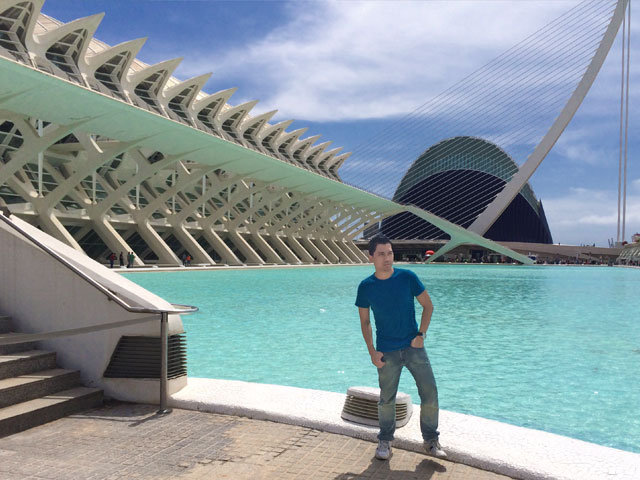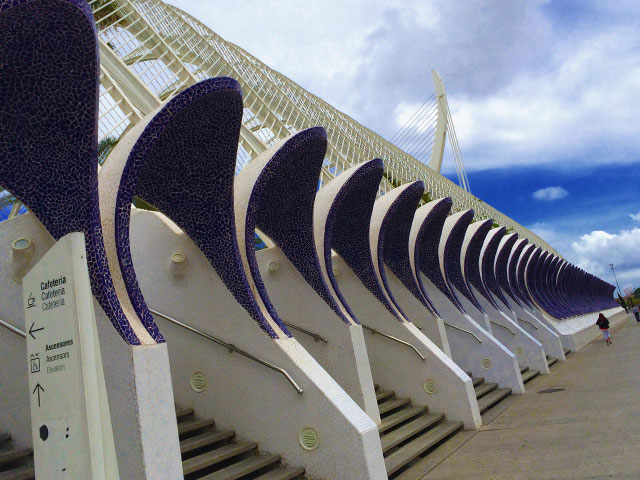Barcelona’s local train routes are a good excuse to escape the hustle of the city — especially on weekends. It's conveniently covering a variety of destinations within Catalunya, some of which are quite a distance away. Just like any other typical weekend, we hopped on a train from Barcelona Sants (also known as Estacio de Sants) with almost nothing but a backpack and headed to Valencia on the nose.
Valencia is the third largest city in Spain after Madrid and Barcelona. Located on the eastern coast of Spain, about 300 km to the south of Barcelona, it takes a good 3-hour journey to reach Valencia by train. The city is known to the world for its City of Arts and Sciences, with futuristic structures. That gave me a strange spark of excitement as it ignites my imagination and love of science.
Just a ten-minute walk from Calle General Urruti where we stayed, we followed the dry Turia river gardens all the way down until we reached the City of Arts and Sciences, locally known as Ciutat de les Arts i les Ciències. This large-scale complex is designed by a world-renowned Valencian architect Santiago Calatrava and Félix Candela where knowledge, culture, and leisure are fused with a unique architectural concept.
The futuristic City of Arts and Sciences transports anyone into the visionary future of the space age — inspired by human anatomy and animal skeletons! It's one of the largest scientific and cultural complexes in Europe. Contained here is a science museum, an opera house, an IMAX theater, a planetarium and an oceanographic park, each standing on its own separate pool of clear waters that reflect the blinding Mediterranean light. Let me walk you through each of them.
Perhaps the most spectacular of the buildings in the City of the Arts and Sciences is the Palacio de las Artes Reina Sofía or Queen Sofía Palace of the Arts. It's a whale-like opera house with a roof structure or feather plume consisting of two metal shells embracing the building on the outside.
Although the structure itself has its own design controversy faced by its Spanish architect Santiago Calatrava, this 21st Century artistic space is quite a stand out of its own. Its sweeping architectural style, complex engineering, and state of the art technology is just fascinating.
The centerpiece of the City of Arts and Sciences is the “eye of knowledge” known as the Hemesferic — a Planetarium, Laserium and IMAX Cinema in one! Its unique design resembles a huge human eye resting at a glass bottom pool creating the illusion of the eye as a whole. Like the eye it is, it has a semi-spherical pupil that literally opens and gives access to the surrounding pool. Thanks to a unique feat of engineering. One interesting fact I found about this masterpiece is the miraculous echo inside of the eye that if two people stay on the opposite pillars, they can seamlessly speak with each other.
Named after King Felipe VI of Spain, who was the Prince of Asturias at the time, Museu de les Ciencies Principe Felipe is just as spectacular inside as it is outside. From outside it resembles a whale skeleton with a spinal column made out of white concrete. Together with L'Hemisfèric, it’s a true embodiment of Calatrava’s fascination with incorporating human and animal anatomy into his architecture. Inside, its five floors and an area of about 42,000 square meters features interactive science exhibits. It is, for a fact, the largest exhibition space in Spain.
This multifunctional covered space rises in the distance with its deep blue vertical clam-like structure. Standing proud with a height of about 80 meters, the giant blue Agora covers an area a little smaller than a soccer pitch, sitting between the Prince Felipe Science Museum and L’Oceanográfic – Europe’s largest sea aquarium.
Located on the Southern facade of the complex, The Greenhouse or locally known as L’Umbracle is a luxurious green promenade with 18-meter-high arches dedicated to the flora of Valencia, with more than 50 species of flowers and tropical plant. Ironically, it was our last spot of the journey but it’s actually designed as the entrance to the City of Arts and Sciences.
The Umbracle is also a space that is a home to numerous sculptures surrounded by nature. The El Paseo de las Esculturas is an open-air art gallery with sculptures by contemporary artists such as Miquel Navarro and Yoko Ono.
After the long exciting walks exploring the City of the Arts and Sciences, a nice ice-cold Horchata drink tops it all! The extremely popular summer drink in Spain is an indispensable part of the Mediterranean diet. It is best served in Valencia locally known as orchata de chufa made from tigernuts called chufas in Spanish or xufes in Catalan, added into water and sugar.
There’s an interesting old story where the name of the drink came from. There was a young woman from L’Horta in Valencia who offered the drink to the visiting King Jaume I of Catalunya and Aragon. The King was delighted with the drink and replied, “¡Això no es llet, això és or, xata!” which means “This is not milk; this is gold (or), pretty girl (xata)! And so, it was called Orxata, Orchata or Horchata depending on which city you are in Catalunya!

